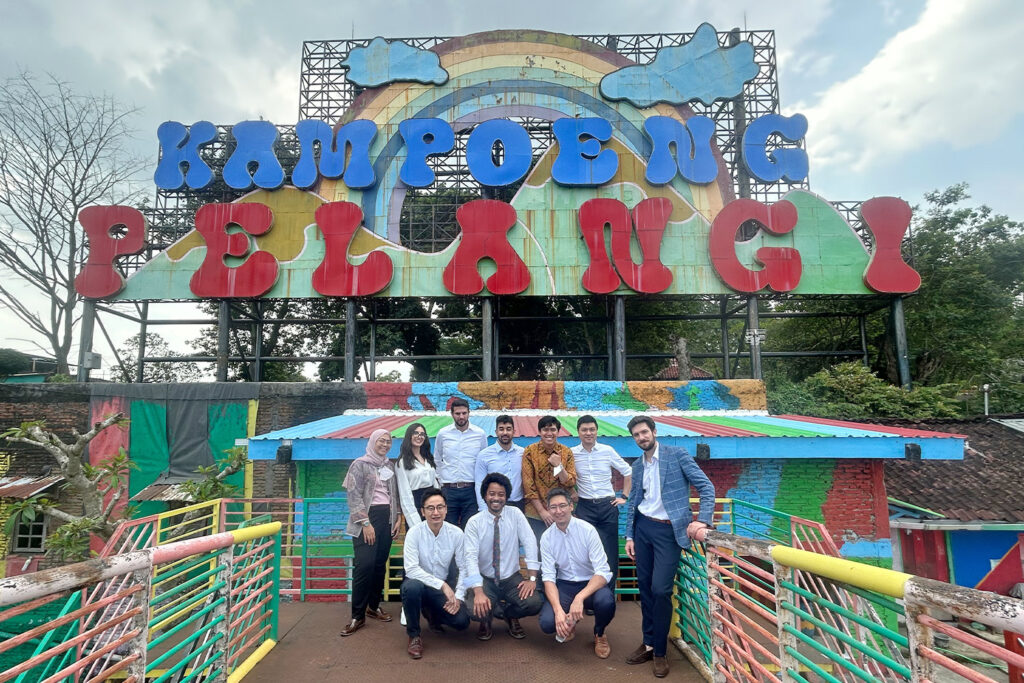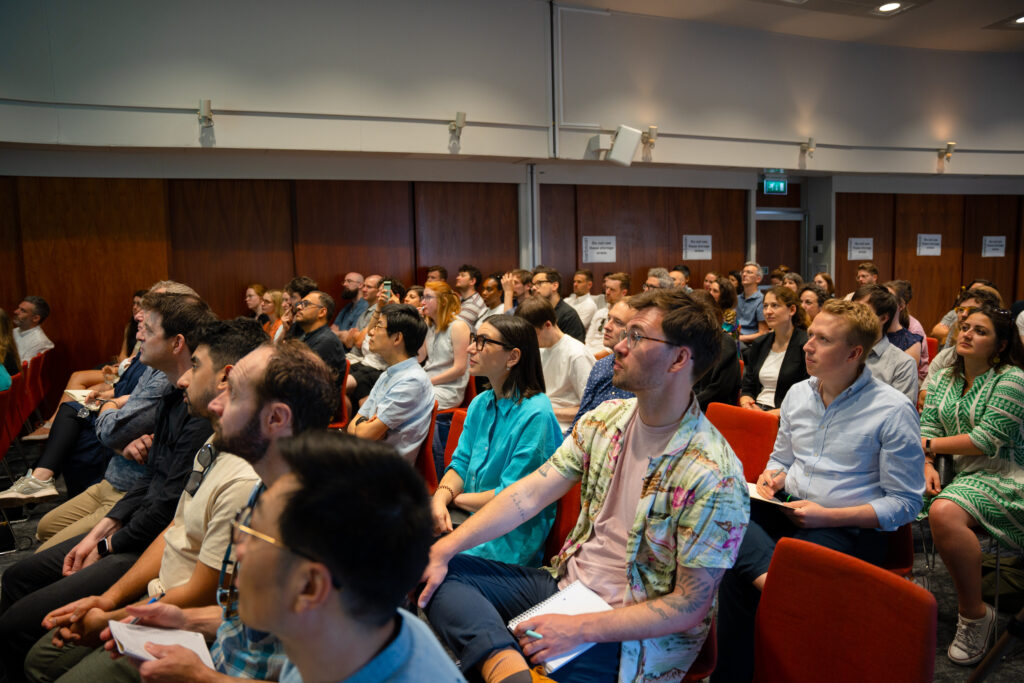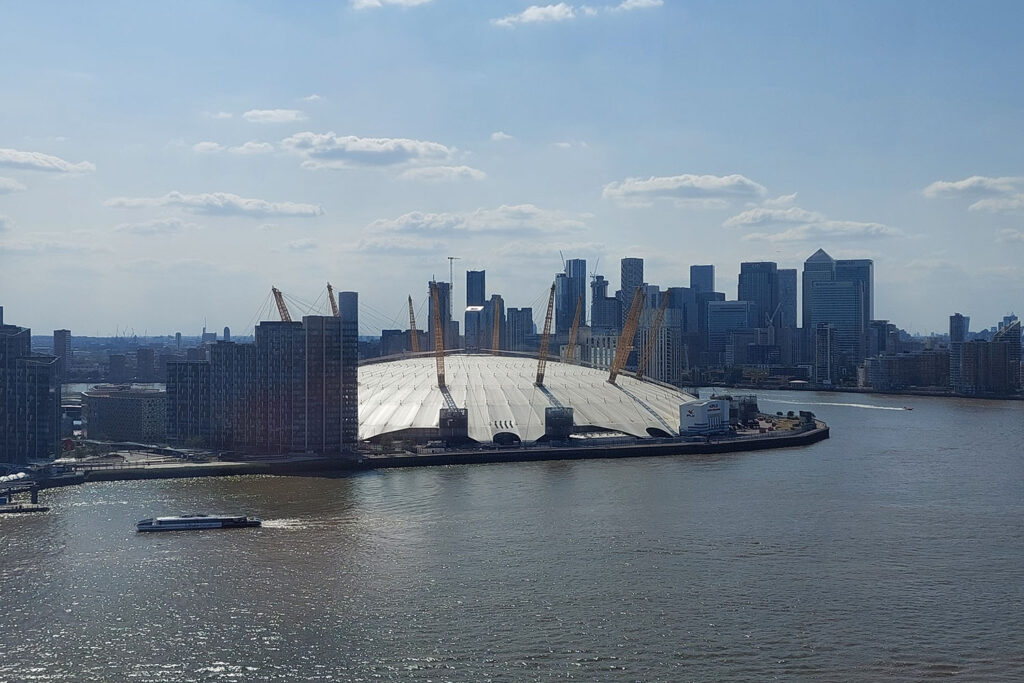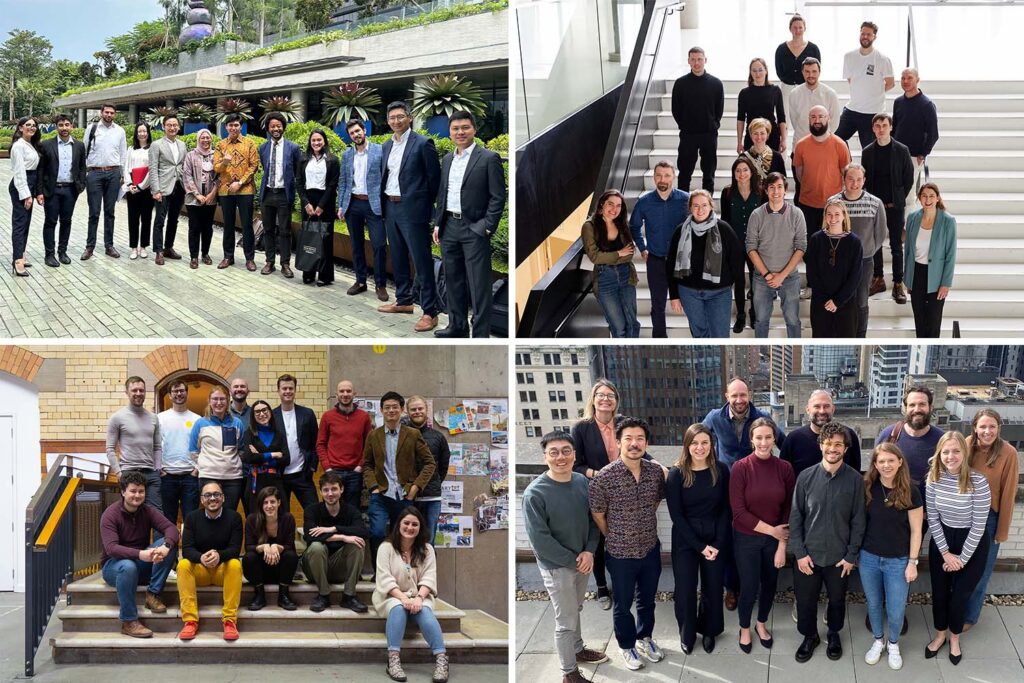Urban C:lab identifies innovation themes in the Middle East, Asia and Pacific
In March 2023, the Middle East, Asia and Pacific chapter of C:lab met in Semarang, Indonesia, to kick-off the third evolution of Buro Happold’s experimental innovation research collective, Urban C:Lab.
Over three intense days of client meetings and brainstorming sessions, the chapter participants explored multiple ideas and concepts around the future challenges of our urban environments. We have identified key themes through which we will explore innovation in our urban environment.
- Revitalising ageing and end-of-life assets
- Mitigating and adapting to climate change
- Tackling declining urban health and increasing inequality
- Maximising socio-economic opportunities of urban growth
- Enabling energy transition in urban environments
- Resource usage optimisation and maximising efficiency in transportation
- Impact of technology and artificial intelligence on urban environments
Revitalising ageing and end-of-life assets
Deteriorating urban assets, such as buildings, infrastructure and public spaces, are a significant issue in many parts of the world. In recent years, urban decay, characterised by ageing assets and a shortage of land for future urban growth, is forcing municipalities to consider revitalising these assets through retrofitting, restoration and repurposing. These are essential components of sustainable urban development.
Retrofitting can be a cost-effective way to improve the sustainability of ageing urban assets and creates job opportunities for local communities. We want to look beyond this. As our long-term collaborator, Reinier de Graaf of OMA, has highlighted, we are becoming wasteful with our built assets, which increasingly have shorter lifespans. Building has become like fast fashion: here today, disposed of tomorrow. Imagine if we simply stopped building new buildings…
Another related issue is the increase in vacancy rates in office buildings post-Covid-19, as a result of hybrid working arrangements. The re-purposing of existing office spaces for other uses could be the answer, but the long-term quality of life must be built into new designs.
We want to explore beyond the issues of preserving local historical and cultural value while revitalising urban assets. Can it be more about historical or cultural significance, or economic rationale? We believe there is huge potential for lifting the anchors on our stranded assets through innovation.
Mitigating and adapting to climate change
The latest Intergovernmental Panel on Climate Change (IPCC) report highlights the devastating consequences of rising greenhouse gases in the atmosphere, such as the destruction of homes, the loss of livelihoods and the fragmentation of communities. To tackle these issues, cities worldwide are taking steps to mitigate and adapt, and possibly retreat, due to the impacts of climate change.

The IPCC concluded that primary mitigation efforts should involve reducing emissions (such as implementing policies and programmes that encourage using renewable energy), promoting energy efficiency in buildings and using low-carbon transportation options.
Our view is that mitigation actions cannot reverse the impacts quickly enough. We want to explore how communities in our region need to prepare for and respond to the effects of climate change. The Indonesian capital is being moved from Jakarta because of rising sea levels. This reflects the reality on the ground… but what becomes of the city? Is it reclaimed by the sea? How do we reimagine a sinking Jakarta? Retreat or restore?
Tackling declining urban health and increasing inequality
It is no secret that urbanisation is happening at an unprecedented rate. The United Nations estimates that by 2050, 68% of the world’s population will live in urban areas. However, this rapid urbanisation has come with a decline in urban health and increasing inequality.
Unfortunately, the built environment in many cities (including housing, transportation and public spaces) fails to adequately promote health and wellbeing, exacerbating existing health disparities and inequality. One of the most pressing challenges urban areas face is the lack of affordable and healthy housing. In addition, poor ventilation, inadequate heating and cooling, and exposure to environmental pollutants exacerbate health problems.
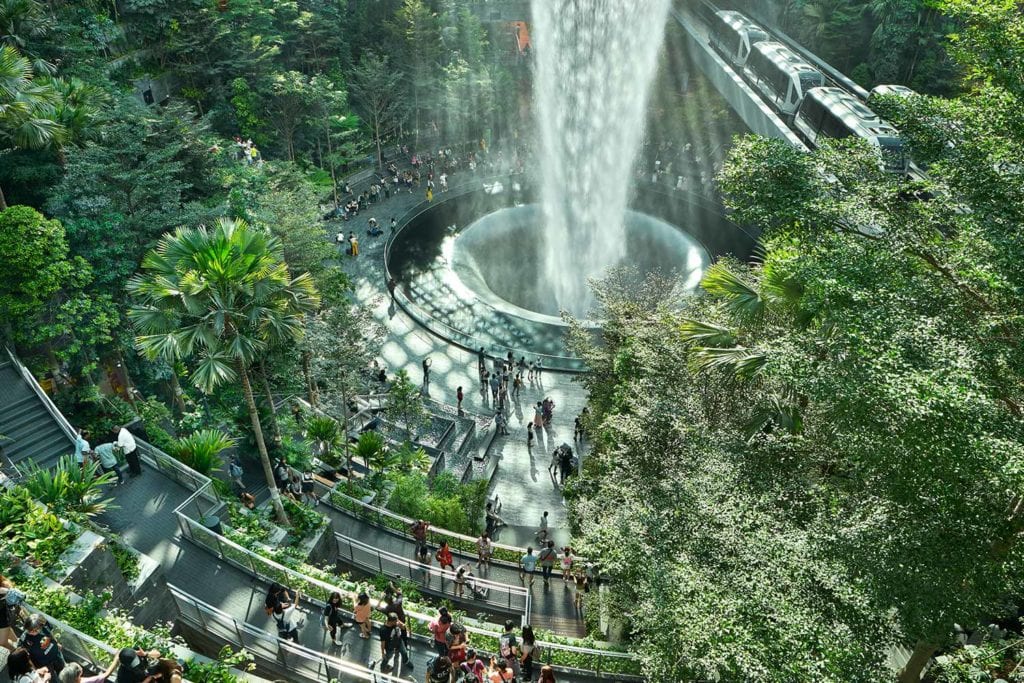
Some participants suggested biophilic design as a solution that improves happiness by tapping into humans’ in-built affinity with the natural world. Others considered incorporating the principles of inclusive design that address the specific needs of a society that contains a diverse range of people, and improving aesthetics, location and layout of university campuses to improve students’ mental health.
In addition, promoting walking, cycling and public transportation, and supporting community-led initiatives, would create healthier, more equitable urban environments for all. In short, smart and simple thinking can create real value in improving the health and equity in our built environments. We want to explore this further.
Maximising socio-economic opportunities of urban growth
Many parts of the world rely on urban growth to drive economic progress and development. However, it’s not just about building more buildings and expanding infrastructure. To truly maximise the socio-economic opportunities of urban growth, we need to adopt new economic models and governance structures that are better suited to the needs of modern society and the nature around it.
One such model is the sharing economy. But can this be about more than Uber, Lyft and the relentless commoditisation of informal labour? We are ever more connected. How do we build these connections into cohesive and meaningful spaces and bring back life the spaces between buildings? Jan Gehl’s thoughts on this are still relevant.
We want to understand if growth means more (buildings, roads, infrastructure). Smarter utilisation and governance can help us be more efficient. We need leaders willing to take a proactive and collaborative approach to building strong, resilient communities. This is a rich seam for innovation.
Enabling energy transition in urban environments
As the world becomes more aware of the urgent need to combat climate change, governments and municipalities are developing strategies to reduce carbon emissions. However, cities face many challenges in realising those strategies and creating an environment that enables the implementation of feasible solutions.
The energy transition will have a big impact on the communities that we live in. We can enable this transition by creating a closed-loop system where resources are used and reused sustainably, also known as a circular economy. This could involve recycling waste materials, using renewable energy sources, and promoting sustainable consumption patterns in urban environments.
As obvious as it may sound, the energy transition requires vast amounts of investment, which can be a challenge given the immaturity of the sector. Green finance is one of the most promising solutions, involving the creation of financial tools to fund sustainable projects, such as renewable energy installations and energy-efficient building retrofits. Green bonds, for example, allow investors to fund projects with a positive environmental impact.

Net zero buildings are another critical component of enabling energy transition in urban environments. These are buildings that generate as much energy as they consume, typically through the use of renewable energy sources and energy-efficient design.
Finally, in addition to innovative thinking, cities must develop sustainable strategies to guide their energy transition. This involves setting ambitious emissions reduction targets, creating policies promoting sustainable development, and engaging with stakeholders to ensure the transition is inclusive and equitable.
Resource usage optimisation and maximising efficiency in transportation
The Middle East, Asia and Pacific region is the engine of today’s fast-paced world. Transportation connectivity is crucial to ensure people and goods can move efficiently and effectively between different locations. Research suggests that globally by 2050, 50% of all vehicles will be autonomous. However, many urban environments struggle to achieve optimal resource usage due to limited integration between different modes of transportation.

To maximise transportation connectivity, we must adopt a more holistic and integrated approach that takes advantage of the strengths of different modes of transport to create a seamless and efficient mobility network. We want to explore innovation in mobility and the opportunities for mode change and connectivity that places the person at the centre – not the vehicle.
Another way to maximise efficiency is to invest in technology that supports transportation integration. We want to go further in exploring how digital platforms can provide real time data to connect people, goods and services.
Additionally, it is crucial to consider the needs of different communities and demographics when designing transportation systems. For example, elderly and disabled people may require different transportation options to young people, families or individuals who live in more remote areas.
Impact of technology and artificial intelligence on urban environments
Finally, technology and generative AI are rapidly changing how we live and work in urban environments and disrupting business models. From transportation to healthcare to energy management, the impact of these new technologies is being felt in every aspect of our daily lives. But what does this mean for the planning and design of our cities?
One critical impact of technology and AI on urban planning and design is the ability to collect and analyse vast amounts of data about our cities. This data can identify patterns and trends in everything from traffic flow to energy consumption, helping planners and designers make more informed decisions about optimising urban environments to benefit residents and businesses.
For example, AI-powered traffic management systems can help to reduce congestion and improve safety on city streets by analysing traffic patterns in real-time and adjusting traffic signals accordingly. Similarly, energy management systems can use data to optimise energy usage in buildings, reducing costs and lowering emissions.
Personalised transportation options like ride-sharing services and autonomous vehicles are transforming how we move around our cities, reducing the need for private car ownership and improving mobility for people of all ages and abilities.
Of course, there are also potential downsides to using technology and AI in urban environments, including privacy and data security issues. We must take these concerns seriously and work to address them through responsible design and governance.
Urban C:lab’s core philosophy is based on the simple idea that innovation comes from collaboration. Jump on board and join us on our innovation journey!



